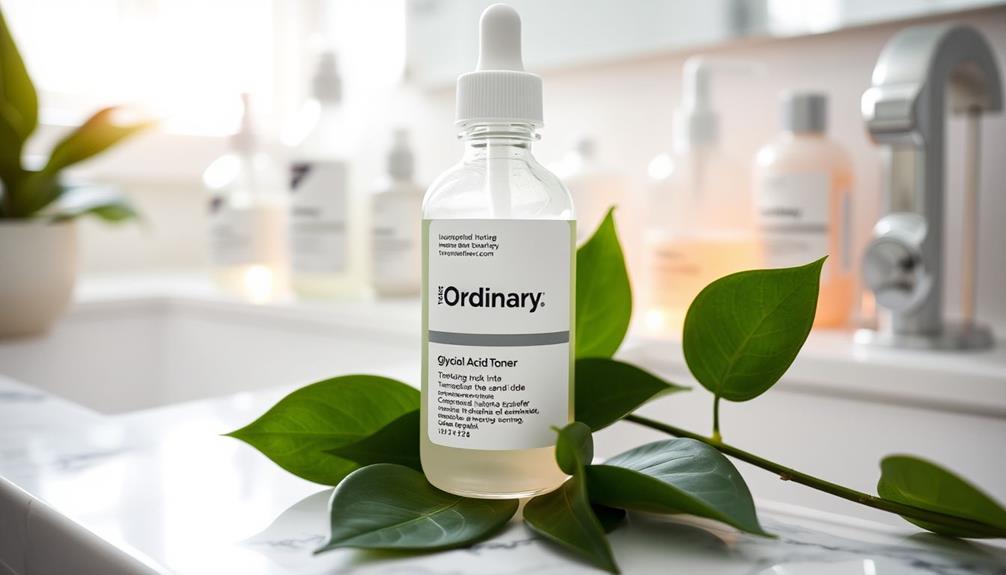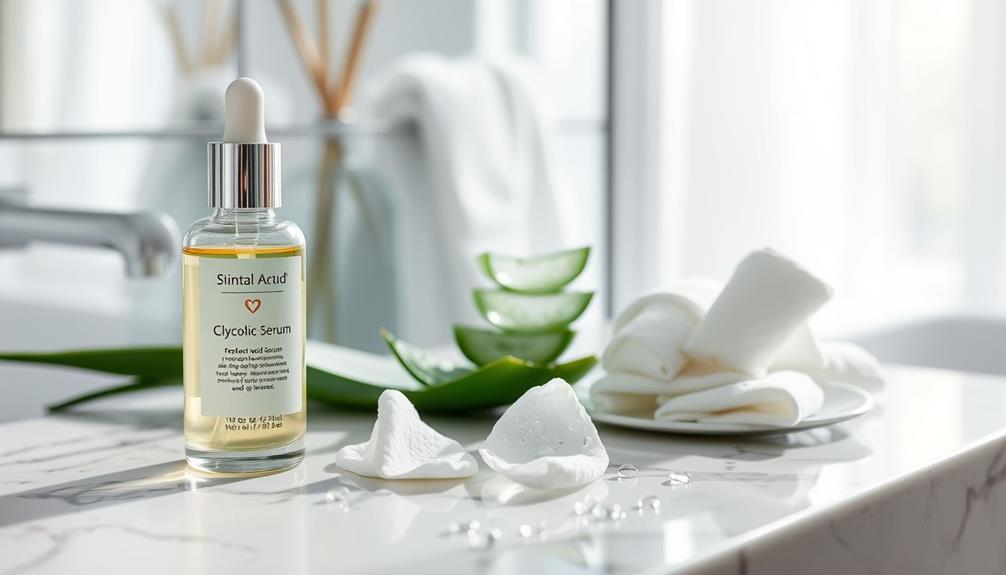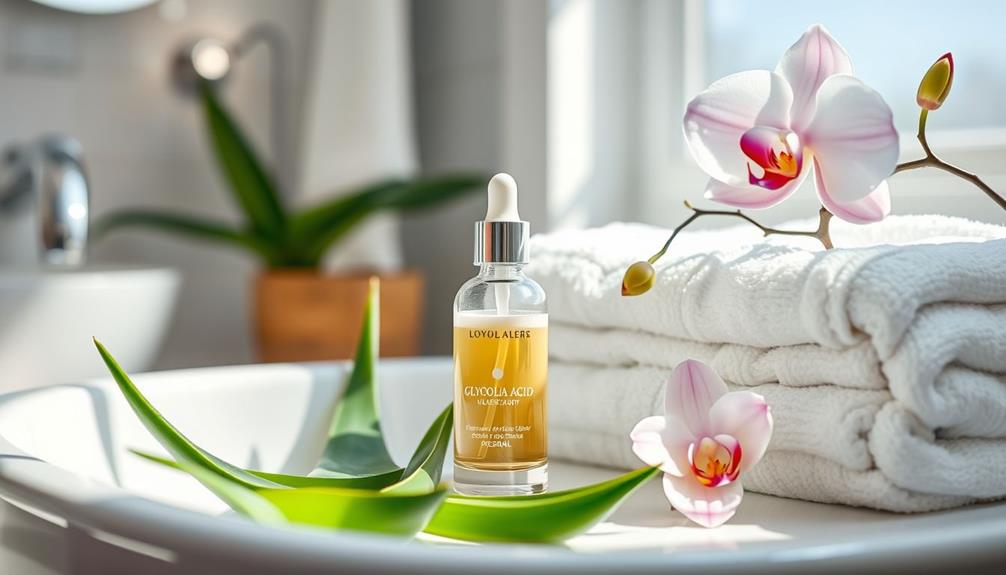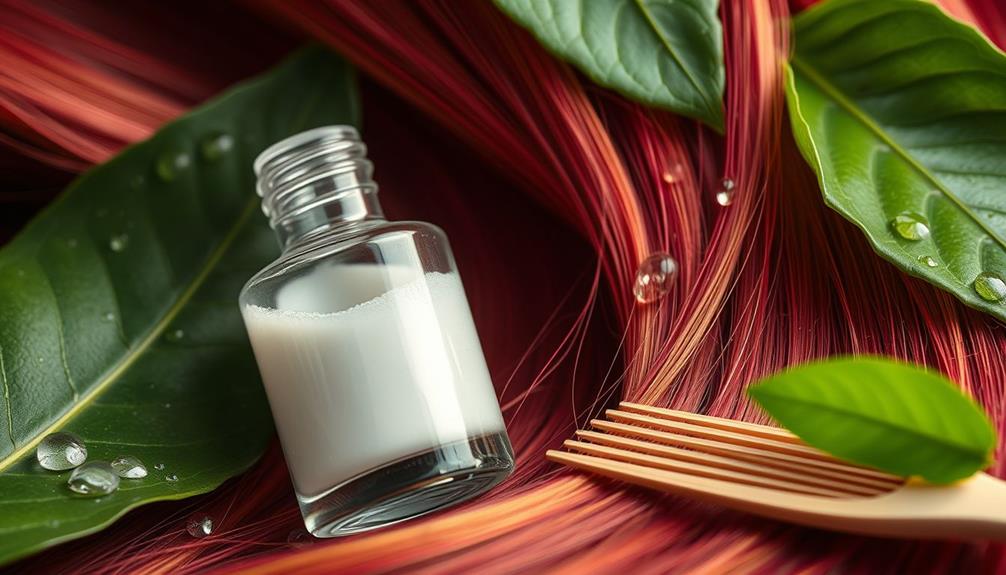Yes, glycolic acid can fight acne effectively. It works by exfoliating the skin, preventing clogged pores and breakouts. By enhancing cell turnover, it helps improve skin texture and reduces the appearance of acne scars. Plus, it fights acne-causing bacteria while boosting moisture retention, which is essential for keeping skin balanced. Experts recommend starting with lower concentrations to gauge your skin's tolerance and gradually increasing as needed. Always follow with sunscreen to protect against increased sensitivity. If you're curious about how to combine glycolic acid with other treatments for even better results, there's more to uncover.
Key Takeaways
- Glycolic acid exfoliates dead skin cells, preventing clogged pores and reducing breakouts, making it effective for acne-prone skin.
- It enhances moisture retention, alleviating dryness often caused by acne treatments, thus improving overall skin texture.
- By stimulating collagen production, glycolic acid helps to improve skin firmness and reduces the appearance of acne scars.
- Its antibacterial properties combat acne-causing bacteria, providing a comprehensive solution for acne management.
Understanding Glycolic Acid
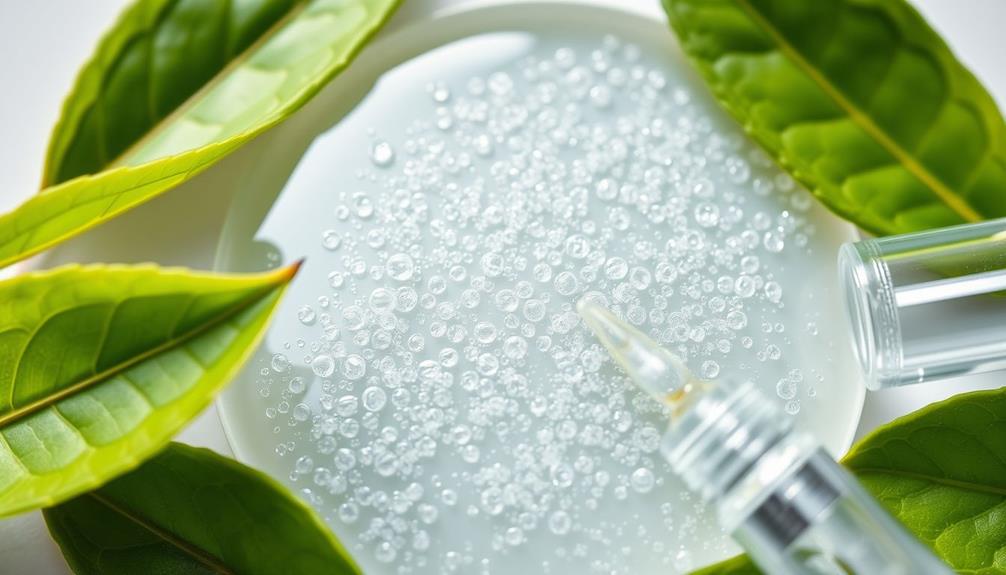
Glycolic acid, an alpha-hydroxy acid derived from sugar cane, effectively exfoliates your skin by dissolving dead skin cells on the surface. This powerful ingredient promotes exfoliation, allowing for deeper penetration into your skin due to its small molecular size.
By enhancing cell turnover, glycolic acid improves skin texture and helps to minimize the appearance of acne scars. Additionally, incorporating essential oils like lavender and tea tree oil in your skincare routine can further support skin health and help fight acne naturally, thanks to their antimicrobial properties and soothing effects natural alternatives to synthetic fragrances.
Regular use of glycolic acid can considerably reduce hyperpigmentation and dark spots, bringing you closer to an even skin tone. It works by preventing dead skin cells from clogging your pores, which is essential for reducing the formation of acne and the severity of breakouts. As you incorporate glycolic acid into your skincare routine, you'll notice smoother skin and fewer blemishes.
Additionally, glycolic acid stimulates collagen production, which contributes to improved skin firmness and elasticity. This not only aids in healing existing acne scars but also helps to maintain a youthful appearance over time. By understanding the benefits of glycolic acid, you're taking an important step toward achieving clearer, healthier skin.
How Glycolic Acid Works
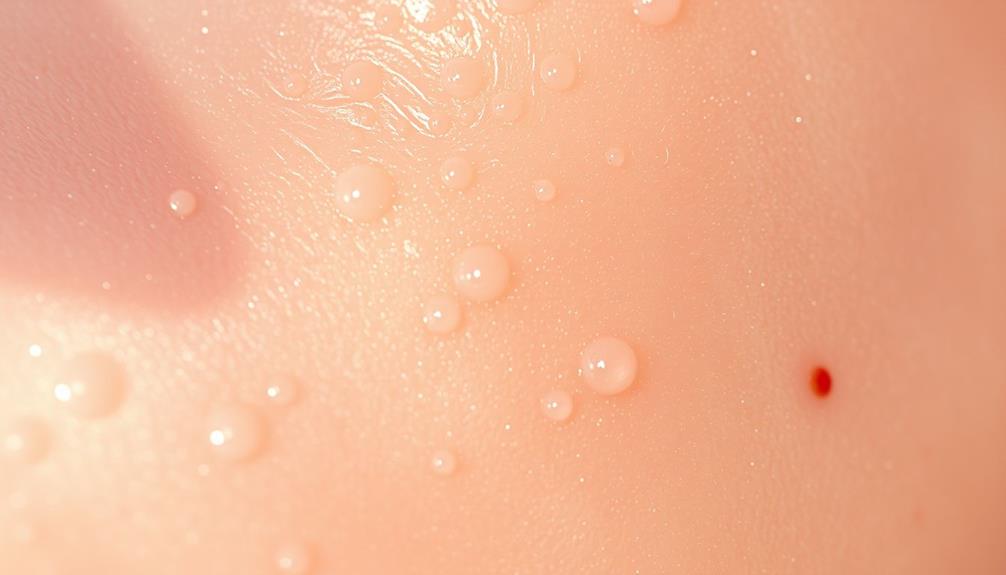
This potent alpha-hydroxy acid penetrates the skin to break down the bonds between dead skin cells, promoting their exfoliation and preventing clogged pores that can lead to acne. By increasing cell turnover, glycolic acid allows fresher, clearer skin to surface, which helps reduce breakouts. Regular use can enhance your skin's overall appearance and texture, making it an excellent choice for those struggling with acne.
Moreover, incorporating techniques from self-practice of somatic therapy may complement your skincare routine by fostering a deeper connection to your body and emotions.
Glycolic acid also boosts moisture retention, balancing oil production and keeping your skin hydrated. This is vital for acne-prone skin, as it helps prevent excessive oiliness that can contribute to clogged pores.
In addition, glycolic acid stimulates collagen production, which improves skin texture and helps reduce the appearance of acne scars over time.
Its antibacterial properties also support acne treatment by combating the bacteria that contribute to breakouts. By incorporating glycolic acid into your skincare routine, you're not just addressing existing acne, but also taking proactive steps to enhance your skin's resilience against future breakouts.
With consistent use, you can expect a smoother, clearer complexion.
Benefits for Acne-Prone Skin
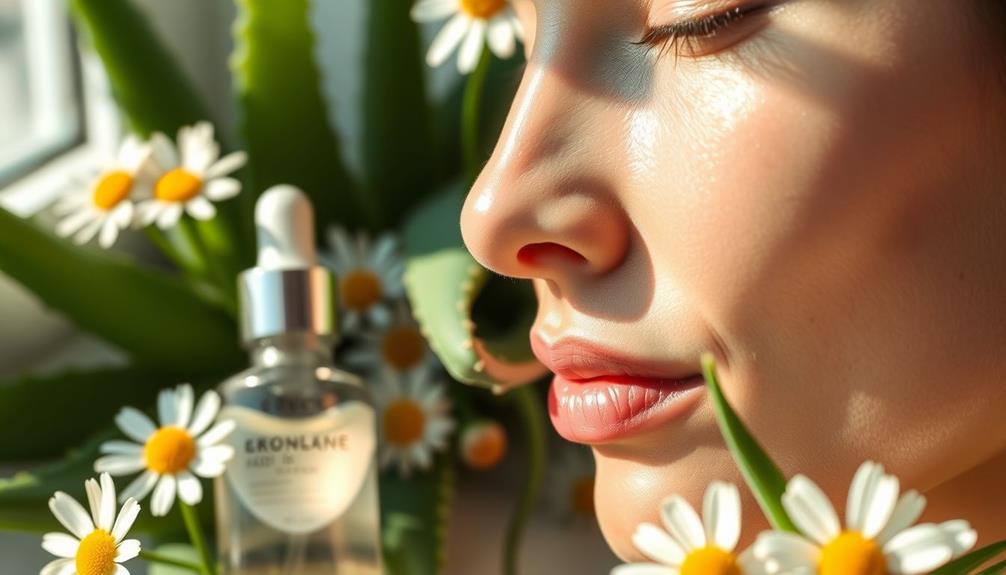
For those with acne-prone skin, incorporating glycolic acid into your routine can lead to clearer, smoother complexions by effectively promoting exfoliation and preventing clogged pores. This powerhouse ingredient works by removing dead skin cells, reducing the likelihood of breakouts.
Glycolic acid also enhances skin moisture retention, which is essential for combating the dryness often caused by acne treatments. Regular use can markedly improve skin texture and diminish the appearance of acne scars and post-inflammatory hyperpigmentation.
In addition, glycolic acid stimulates collagen production, helping to create thicker skin that can better withstand inflammation and irritation related to acne. Its antibacterial properties further assist in reducing acne-causing bacteria on your skin, making it a all-encompassing solution for those struggling with acne-prone skin.
Here's a quick overview of the benefits:
| Benefit | Description |
|---|---|
| Exfoliation | Removes dead skin cells, preventing clogged pores |
| Skin texture improvement | Smooths skin and reduces acne scars |
| Antibacterial properties | Reduces acne-causing bacteria for fewer breakouts |
Recommended Usage Guidelines
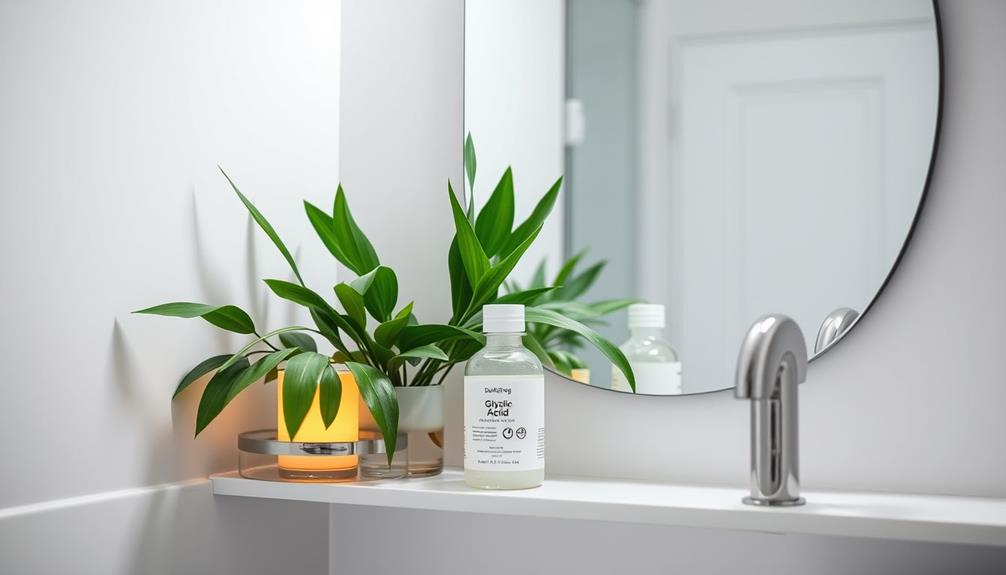
Incorporating glycolic acid into your skincare routine should be done gradually to make certain your skin adjusts comfortably. Start by using glycolic acid products a few times a week and gradually increasing the frequency as your skin becomes accustomed to it. This will help minimize any potential irritation and allow your skin to reap the benefits of glycolic acid. Glycolic acid toner benefits include exfoliation, brightening of the skin, and improving the appearance of fine lines and wrinkles.
Start with lower concentrations, typically around 5-10%, to monitor your skin tolerance.
Using glycolic acid in the evening is recommended to minimize sun sensitivity, and don't forget to apply broad-spectrum sunscreen during the day.
Here are some usage guidelines to follow:
- Use a pea-sized amount of glycolic acid cleansers once or twice daily.
- Apply toners and serums in small quantities, ideally in the evening.
- For concentrations over 10%, limit usage to once a week and seek professional supervision.
Potential Side Effects
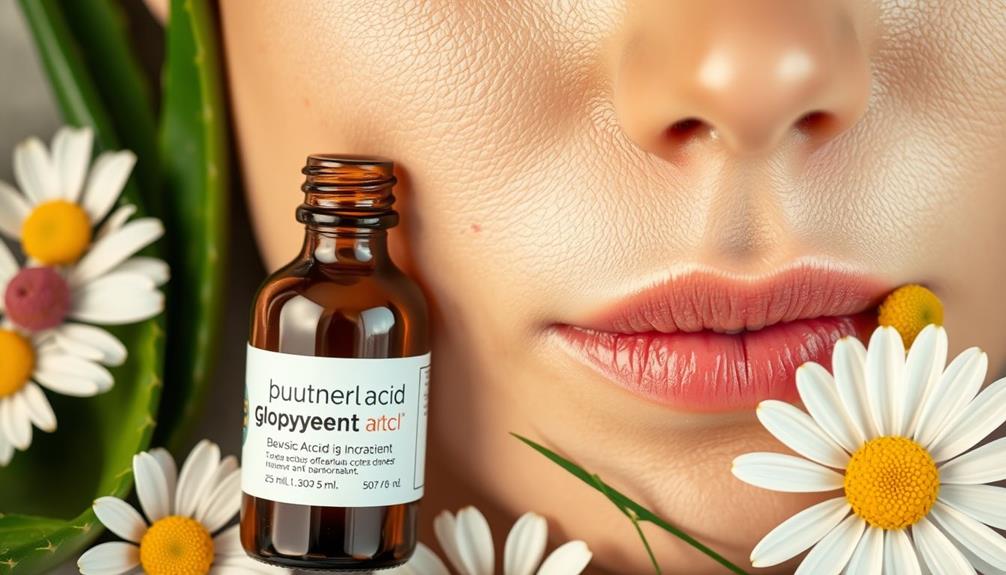
When using glycolic acid, you might notice common reactions like swelling, itching, or a burning sensation, especially if you have sensitive skin.
It's vital to pay attention to how your skin reacts, as these side effects can vary in intensity.
Some individuals find that incorporating essential oils for skin treatment can help alleviate irritation.
Always start with lower concentrations to minimize irritation and monitor your skin's response.
Common Reactions to Use
Using glycolic acid can lead to common reactions like swelling, itching, and burning sensations, especially if you have dry or sensitive skin. These reactions often stem from skin irritation, which may include redness and peeling.
It's important to be aware that the risk of these side effects increases with higher concentrations of glycolic acid (30-40%), so using such products under professional supervision is advisable.
Additionally, glycolic acid can boost your skin's sun sensitivity. This means you'll need to apply sunscreen daily to protect your skin from harmful UV rays. If you have darker skin tones, monitor your skin closely, as there's a heightened risk of hyperpigmentation with glycolic acid use.
Here are some common reactions you might experience:
- Swelling or itching
- Burning sensations
- Redness and peeling
Being informed about these potential reactions will help you use glycolic acid safely and effectively. Always start with a patch test and consult with a dermatologist if you're unsure about how to introduce this active ingredient into your routine.
Sensitive Skin Considerations
Sensitive skin often reacts more intensely to glycolic acid, leading to irritation, redness, and peeling that can be uncomfortable. If you have sensitive skin, it's vital to start with a lower concentration of glycolic acid and closely monitor your skin response.
Common side effects include burning sensations and swelling, particularly when using high concentrations or applying it too frequently. In addition to potential irritation, sun sensitivity is a major concern. Glycolic acid can increase your skin's vulnerability to UV damage, so wearing a broad-spectrum sunscreen daily is essential.
If you have darker skin tones, be cautious, as you might face a higher risk of hyperpigmentation or irritation. Consulting a dermatologist can help you find the right approach tailored to your skin type.
It's advisable to avoid using glycolic acid in combination products with other strong actives, such as retinol or salicylic acid, as this can exacerbate irritation. Always listen to your skin; if you experience significant discomfort, it may be time to adjust your regimen or seek professional guidance.
Comparing Glycolic and Salicylic Acid
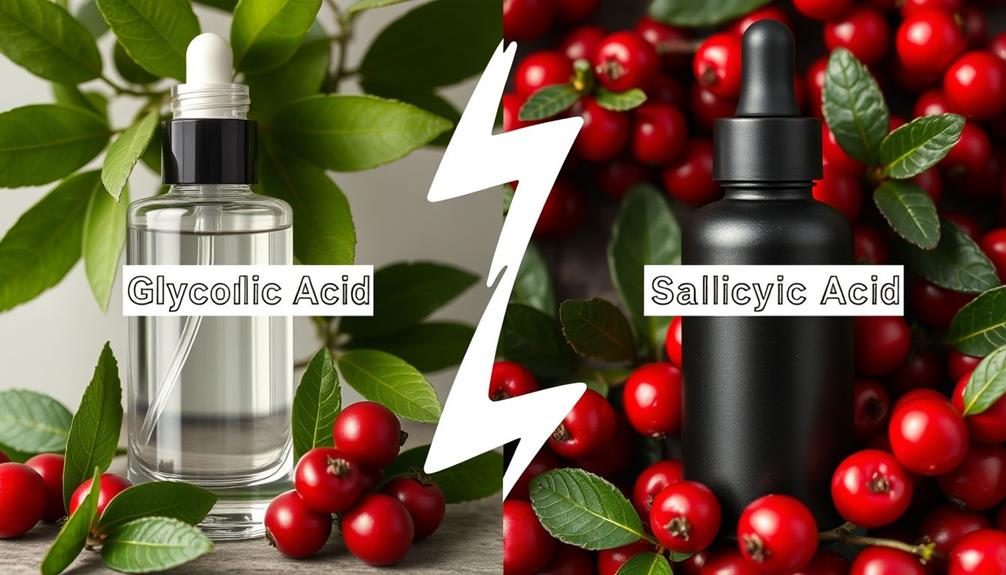
Glycolic and salicylic acids serve distinct purposes in skincare, with glycolic focusing on surface exfoliation and overall skin brightness, while salicylic dives deeper to combat acne and control oiliness.
If you're struggling with active acne, salicylic acid is often your best bet due to its ability to penetrate pores and reduce inflammation. On the other hand, glycolic acid excels at improving texture and fading hyperpigmentation, making it ideal for those looking to address fine lines and enhance their overall skin tone.
Here are a few points to keep in mind:
- Glycolic acid is best for dry or non-oily skin types.
- Salicylic acid works wonders for oily and acne-prone skin types.
- Combining both acids can benefit those dealing with both acne and hyperpigmentation.
Ultimately, knowing your skin type and concerns will help you decide which acid to incorporate into your routine.
Whether you choose glycolic or salicylic acid, both can be powerful tools in your fight against acne and skin aging.
Expert Recommendations
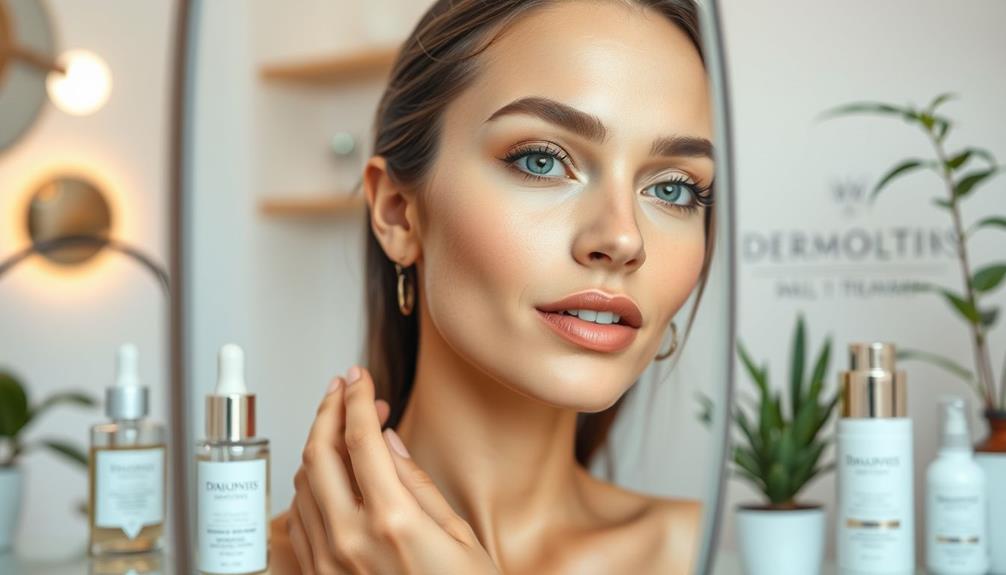
Many experts suggest starting with a lower concentration of glycolic acid to better understand how your skin reacts before increasing the dosage for acne treatment. This approach helps you gauge your skin's tolerance and minimizes irritation. Clinical studies reveal that glycolic acid promotes cell turnover, effectively removing dead skin cells and preventing clogged pores, which is essential in managing acne.
Dermatologists also recommend combining glycolic acid with salicylic acid for enhanced results. This combination targets different aspects of acne, offering a thorough treatment strategy. Regular use of glycolic acid can also improve overall skin texture and tone, addressing post-inflammatory hyperpigmentation often left behind by breakouts.
Here's a quick overview of expert recommendations:
| Recommendation | Details |
|---|---|
| Start Low | Begin with 5-10% glycolic acid |
| Monitor Skin Reaction | Gradually increase concentration as tolerated |
| Combine Treatments | Use alongside salicylic acid for better results |
| Focus on Texture Improvement | Helps reduce post-inflammatory hyperpigmentation |
Safety Precautions
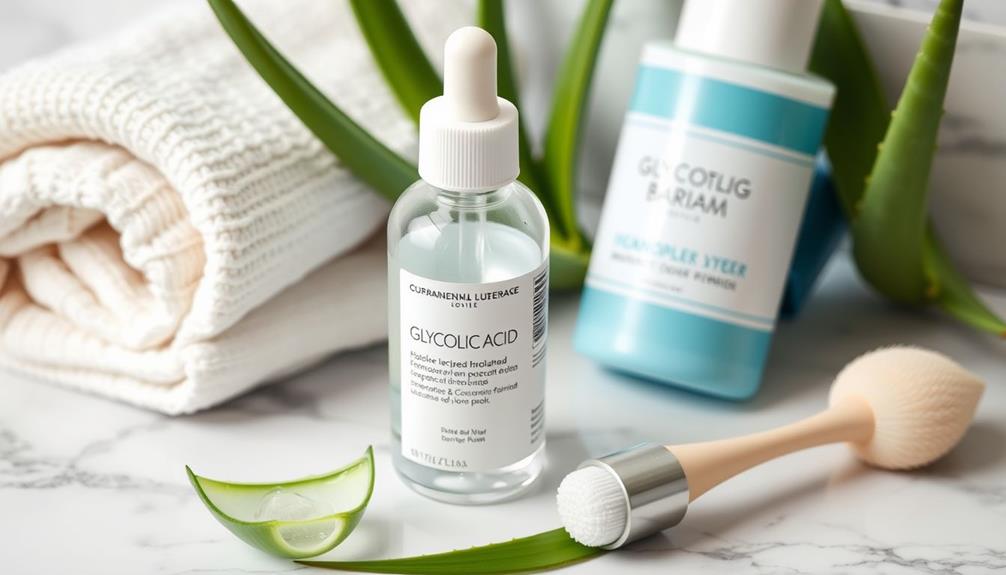
When using glycolic acid for acne treatment, it's important to take specific safety precautions to protect your skin and maximize results. Glycolic acid can increase sun sensitivity, so daily sunscreen is essential to prevent sunburn and skin damage.
If you have sensitive skin, start with lower concentrations to minimize irritation and adverse reactions. Always monitor your skin's response; if you experience severe irritation, such as burning or persistent redness, discontinue use immediately.
Here are some essential safety precautions to keep in mind:
- Always apply sunscreen daily to protect against sun sensitivity.
- Begin with lower concentrations of glycolic acid to assess skin tolerance.
- Consult a dermatologist, especially if you have darker skin tones, to avoid the risk of hyperpigmentation.
Combining Ingredients Effectively
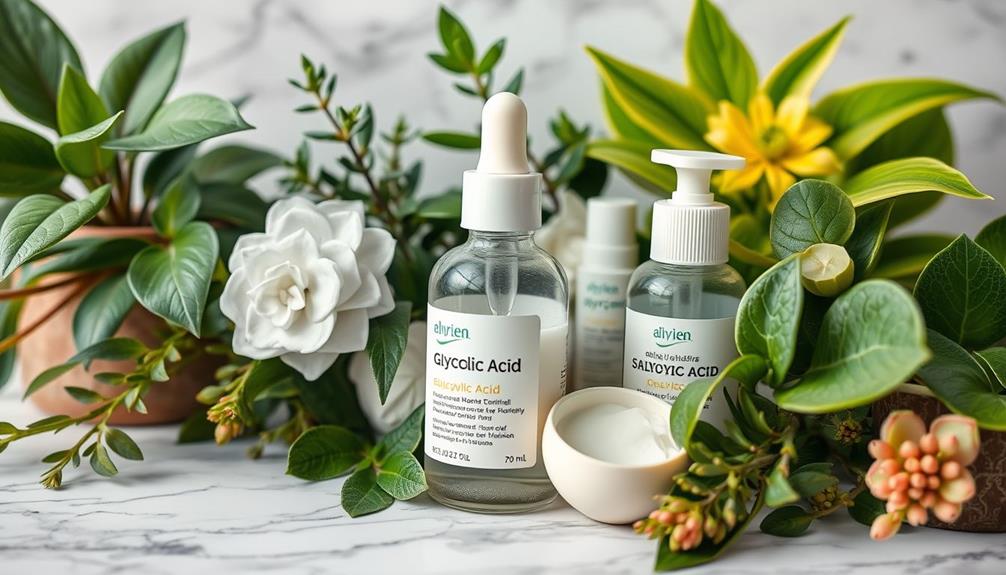
Combining glycolic acid with other effective ingredients can enhance your acne treatment and improve overall skin health. For instance, pairing glycolic acid with salicylic acid can be particularly beneficial. While salicylic acid targets excess sebum, glycolic acid promotes exfoliation, leading to improved skin texture.
To avoid irritation, it's best to use these ingredients at different times—applying glycolic acid in the evening and vitamin C in the morning.
Incorporating hydrating ingredients like hyaluronic acid can also help counteract dryness and irritation from glycolic acid, allowing for effective exfoliation without compromising skin hydration.
However, avoid combining glycolic acid with other exfoliating acids, such as lactic acid or retinol, on the same day. This minimizes the risk of over-exfoliation and irritation.
To further soothe your skin, consider adding calming ingredients like aloe vera or chamomile to your routine. These soothing ingredients can help alleviate potential redness and inflammation associated with glycolic acid.
Long-Term Skin Health Considerations
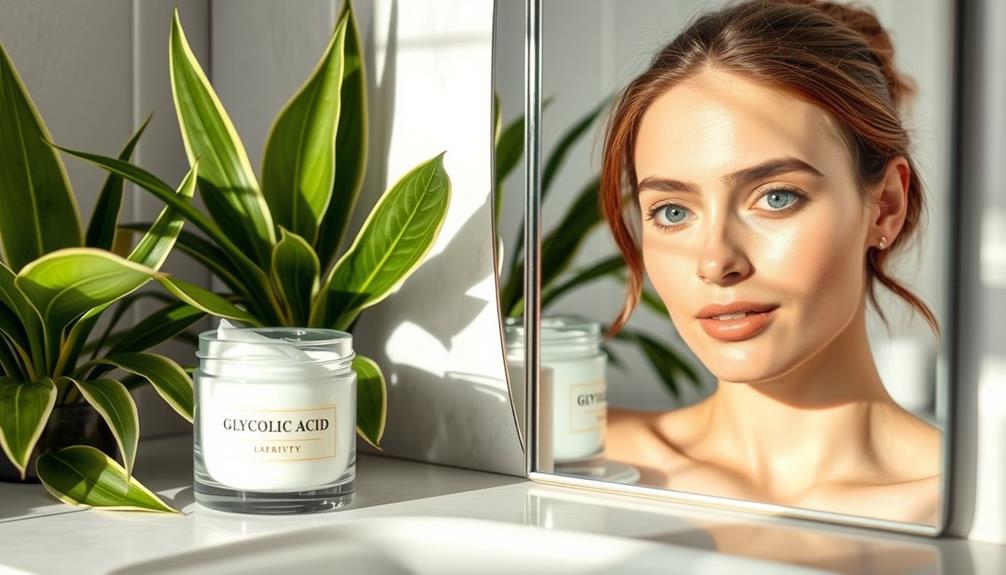
Incorporating glycolic acid into your routine not only addresses immediate acne concerns but also fosters long-term skin health by promoting continuous cell turnover and improving overall skin texture.
By regularly using glycolic acid, you'll effectively reduce the buildup of dead skin cells, which can lead to clogged pores and breakouts. This exfoliating effect helps improve skin tone and clarity over time, giving you a more radiant complexion.
Here are some key long-term benefits of using glycolic acid:
- Stimulates collagen production, enhancing skin firmness and reducing signs of aging.
- Balances oil levels in the skin, making it beneficial for both acne-prone and dry skin types.
- Minimizes the appearance of post-inflammatory hyperpigmentation and improves overall skin tone.
Frequently Asked Questions
What Do Dermatologists Say About Glycolic Acid?
Dermatologists recommend glycolic acid for its exfoliating properties, helping you remove dead skin cells and unclog pores. They suggest starting with lower concentrations to avoid irritation and emphasize daily sunscreen use to protect your skin.
Can Glycolic Acid Cure Acne?
While glycolic acid won't exactly be your magic bullet for curing acne, it does help exfoliate and improve skin texture. Think of it as a solid long-term ally in preventing future breakouts and enhancing overall skin health.
How Long Does It Take for Glycolic Acid to Clear Acne?
It takes about 4 to 6 weeks to notice improvements in your acne with glycolic acid. For ideal results, stick to a consistent routine and be patient; full benefits usually appear in 8 to 12 weeks.
Does Glycolic Acid Get Rid of Hormonal Acne?
Glycolic acid's like a superhero for hormonal acne! It exfoliates, unclogs pores, and speeds up skin renewal. While it's effective, combining it with other acne-fighting ingredients might amplify your results even more. You'll love the glow!
Conclusion
Just like a skilled gardener prunes away dead branches to let vibrant flowers bloom, incorporating glycolic acid into your skincare routine can help clear away the debris of acne, allowing your skin to flourish.
By understanding how it works and using it wisely, you're nurturing a healthier complexion.
Remember, consistency is key, and with the right guidance, your skin can transform into a radiant garden, free from the weeds of blemishes.
Embrace the journey to clearer skin!

